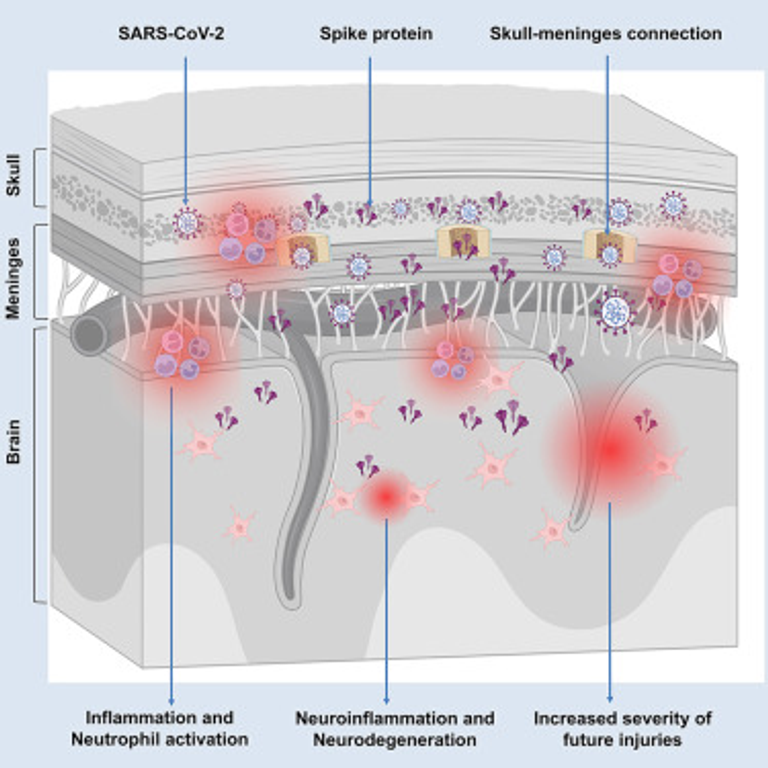SARS-CoV-2 infection is associated with long-lasting neurological symptoms, although the underlying mechanisms remain unclear. Using optical clearing and imaging, we observed the accumulation of SARS-CoV-2 spike protein in the skull-meninges-brain axis of human COVID-19 patients, persisting long after viral clearance. Further, biomarkers of neurodegeneration were elevated in the cerebrospinal fluid from long COVID patients, and proteomic analysis of human skull, meninges, and brain samples revealed dysregulated inflammatory pathways and neurodegeneration-associated changes. Similar distribution patterns of the spike protein were observed in SARS-CoV-2-infected mice. Injection of spike protein alone was sufficient to induce neuroinflammation, proteome changes in the skull-meninges-brain axis, anxiety-like behavior, and exacerbated outcomes in mouse models of stroke and traumatic brain injury. Vaccination reduced but did not eliminate spike protein accumulation after infection in mice. Our findings suggest persistent spike protein at the brain borders may contribute to lasting neurological sequelae of COVID-19.
Persistence of spike protein at the skull-meninges-brain axis may contribute to the neurological sequelae of COVID-19
29 nov. 2024|Cell Host & Microbe

Contenu Associé

APCOVID-19 : étude nationale sur la prévalence et l’impact de l’affection post-COVID-19
A partir du 1er septembre 2022, Santé publique France lance une étude afin d’estimer la prévalenc...

Formes neurologiques du COVID long de l’adulte : approche critique
RÉSUMÉ: Désormais reconnu par les autorités de santé, le COVID long est identifié comme une affe...

Covid-19 : manifestations et complications neurologiques à la phase aiguë de la maladie
Les manifestations et complications neurologiques de la phase aiguë de la Covid-19 sont nombreuse...